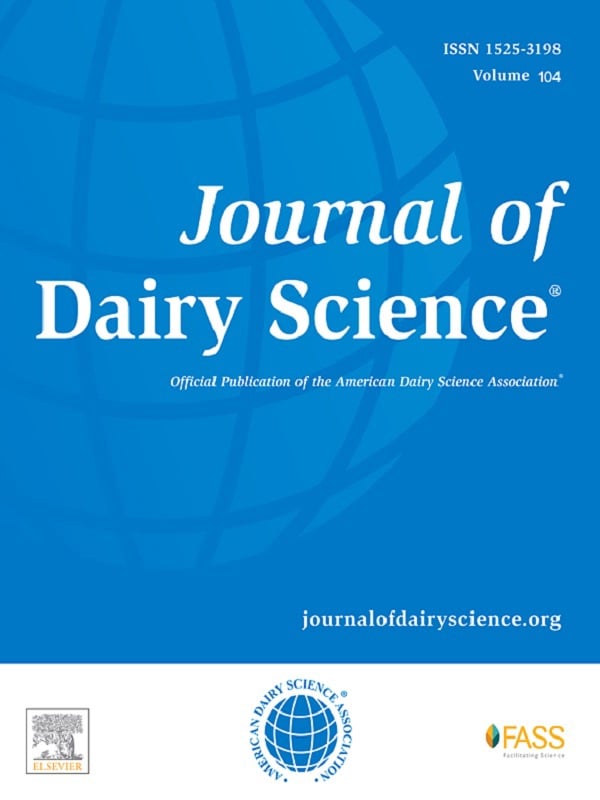Effects of energy source in milk replacer on glucose metabolism of neonatal dairy calves
By A. C. Welboren,1 B. Hatew,2 O. López-Campos,3 J. P. Cant,1 L. N. Leal,4 J. Martín-Tereso,4 and M. A. Steele1,2*
1 Department of Animal Biosciences, University of Guelph, Guelph, ON Canada, N1G 2W1
2 Department of Agricultural, Food and Nutritional Science, University of Alberta, Edmonton, AB Canada, T6G 2P5
3 Lacombe Research and Development Centre, Agriculture and Agri-Food Canada, Lacombe, AB Canada, T4L 1V7
4 Trouw Nutrition Research and Development, PO Box 299, 3800 AG, Amersfoort, the Netherlands
- Ruminants
- Dairy
- 2020
- Open Access
J. Dairy Sci. 104:5009–5020 https://doi.org/10.3168/jds.2020-19405
B. Hatew, O. López-Campos, L. N. Leal, J. Martín-Tereso, M.A. Steele

Abstract
Milk replacers (MR) formulated to contain more lactose than whole milk could potentially reduce insulin sensitivity in dairy calves. This study evaluated how partially replacing lactose in MR with fat on a weight/weight basis affects glucose–insulin kinetics in neonatal dairy calves fed high quantities of MR. Thirty-four Holstein bull calves were blocked by dam parity (1.6 ± 0.3) and randomly assigned to 1 of 2 treatments (n = 17): a high-lactose MR (HL; 46.1% lactose, 18.0% crude fat, and 23.9% crude protein on a dry matter basis) or a high fat MR (HF; 39.9% lactose, 24.6% crude fat, and 24.0% crude protein on a dry matter basis). Calves were individually housed and fed pooled colostrum at 1.5 h and 12 h postnatal at 18 and 9% of metabolic body weight (BW0.75), respectively. From 24 h postnatal until the end of the study (d 7), calves were transitioned to MR (prepared at 150 g/L) at 18% of BW0.75 twice daily at 0700 and 1900 h. On d 4, an insulin-modified intravenous glucose tolerance test was conducted 8 h after the morning meal by intravenous infusion of glucose (0.54 g/kg of BW0.75, min 0) and insulin (3.9 µg/kg of BW0.75, min 20). During postprandial sampling on d 6, abomasal emptying was assessed by dosing acetaminophen (0.13 g/kg of BW0.75) with MR and measuring its appearance within plasma. Sequential blood samples were collected and analyzed for plasma glucose, insulin, and acetaminophen concentrations. Calves were killed on d 7 and liver and pancreatic tissues were collected for histomorphological analysis. Partially replacing lactose in MR with fat increased body weight gain (679.6 vs. 462.0 ± 69.68 g/d) and gain:metabolizable energy intake (186.6 vs. 120.5 ± 20.21 g of body weight/Mcal) compared with feeding HL MR. Furthermore, abomasal emptying rate was reduced in calves fed HF MR. Calculated variables based on postprandial glucose and insulin concentrations, such as maximum concentration or area under the curve, were or tended to be lower in HF than in HL calves. Postprandial insulin sensitivity tended to be reduced in HL compared with HF, although insulin sensitivity estimated from the insulin-modified intravenous glucose tolerance test was not different. Calves fed HF MR showed enhanced glucose-stimulated insulin secretion. In conclusion, partially replacing lactose in MR with fat resulted in smaller fluctuations in postprandial glucose and insulin concentrations and tended to increase postprandial but not fasting insulin sensitivity in neonatal dairy calves.